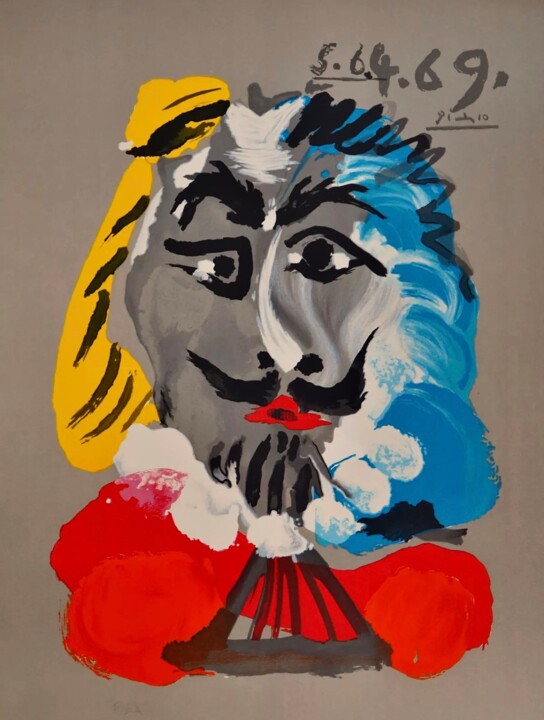


Series of “Imaginary portraits”: Mousquetaire (Musketeer) (1969) Printmaking by Pablo Picasso
Sold
See more from Pablo PicassoThe artist offers works on commission
Did you miss the opportunity to buy this work? Good news: the artist can also create a custom work, just for you!
Seller DAKKARA Art Galleries
-
Limited Edition (#1/250)
Printmaking,
Lithography
on Paper
- Dimensions Height 29.9in, Width 22.1in
- Framing This artwork is not framed
- Categories Printmaking under $20,000 Abstract
His final years were also extremely prolific, and he seemed to be painting on any material and surface he could get his hands on. Early that year, a delivery of art supplies arrived at Picasso's studio wrapped up in thick paper and boxed in corrugated cardboard. Rather than throw away the packaging, he immediately began to use them as canvases, slathering paint directly onto paper and cardboard and creating these amazing portraits of moustachioed musketeers, abstract female faces, and historical figures like Balzac, Shakespeare, and Rembrandt.
Picasso was so pleased with the results that he sought out a printmaker to reproduce the series and came upon Marcel Salinas. Salinas was a Parisian printmaker who had abandoned a career in law to become an artist and later a renowned printmaker and publisher. He would reproduce Picasso's paintings by hand on lithographic blocks, Picasso occasionally making corrections, before they were printed in two editions of 250 prints.
In a way, these portraits are the perfect Picasso print: they show the evolution of the artist's career from a young portraitist and founder of Cubism to the highly innovative paintings of his later years.
Pablo Picasso was a prolific printmaker, producing over 2,400 original prints throughout his career in a variety of techniques. But until 1945, almost all of his prints were black and white, and only a handful of them were lithographs, a printmaking method that closely resembles painting, enabling artists to draw directly on a stone slab or metal plate. This ratio drastically changed when Picasso met the master printmaker Fernand Mourlot. In just under two decades, Picasso and Mourlot produced over 350 lithographs (many of them in color), experimenting with unconventional techniques like finger painting that pushed the boundaries of the medium.
Related themes
Pablo Picasso was one of the most influential and renowned artists of the 20th century. He was a Spanish painter, sculptor, printmaker, ceramicist, and stage designer, known for his groundbreaking contributions to various art movements, particularly Cubism. Picasso was born on October 25, 1881, in Málaga, Spain, and he passed away on April 8, 1973, in Mougins, France.
Picasso's early works, during his Blue Period and Rose Period, often depicted themes of poverty, melancholy, and circus life. These periods were characterized by the predominant use of blue and rose tones, respectively. One of his notable works from this time is "Les Demoiselles d'Avignon," which marked a transition towards a more abstract and innovative style.
It was in the early 20th century that Picasso, along with Georges Braque, developed the art movement known as Cubism. Cubism shattered traditional artistic conventions by breaking down objects and subjects into geometric shapes and presenting multiple viewpoints simultaneously. This approach to art had a profound impact on the way artists approached representation and perspective.
Throughout his career, Picasso created a vast and diverse body of work, experimenting with different styles and mediums. He is also well-known for his contributions to Surrealism and his exploration of various artistic forms, including ceramics and sculpture.
Picasso's art often reflected his personal life, and he had a complex and colorful personal history. He had numerous relationships and marriages, which influenced the subjects of his art. His work is a rich tapestry of emotions, ideas, and influences, and he is celebrated for his ability to constantly reinvent his artistic style.
Some of Picasso's most famous works include "Guernica," a powerful anti-war painting that portrays the horrors of the Spanish Civil War, and "The Weeping Woman," a part of his series on the Spanish Civil War's suffering. Picasso's impact on the art world is immeasurable, and his legacy continues to influence artists and art enthusiasts worldwide. His ability to push the boundaries of art and constantly innovate has made him an iconic figure in the history of modern art.
-
Nationality:
FRANCE

- Date of birth : 1881
- Artistic domains: Represented by a Gallery,
- Groups: Contemporary French Artists Artists presented by a gallery
 Picasso's daughter offers France nine paintings to settle her country's estate debt
Picasso's daughter offers France nine paintings to settle her country's estate debt
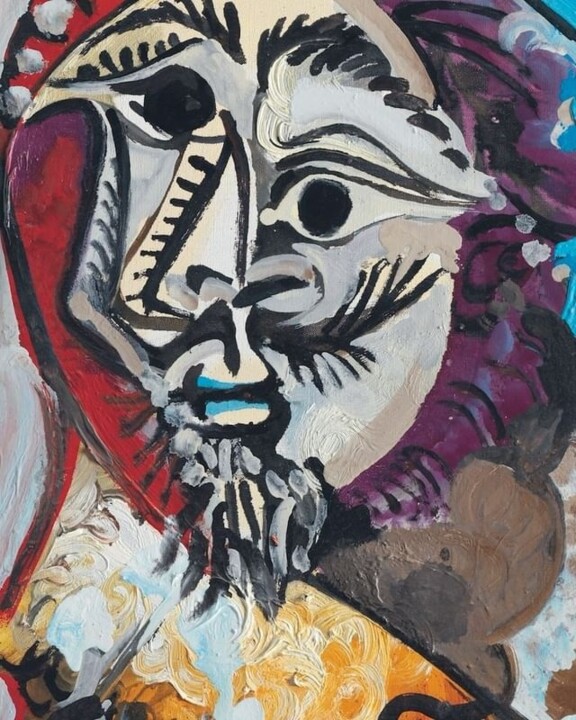 Two Picasso portraits are up for auction in Hong Kong, one of which belonged to Sean Connery
Two Picasso portraits are up for auction in Hong Kong, one of which belonged to Sean Connery
 A smuggled Picasso drawing worth nearly $500,000 has been seized by Spanish authorities
A smuggled Picasso drawing worth nearly $500,000 has been seized by Spanish authorities
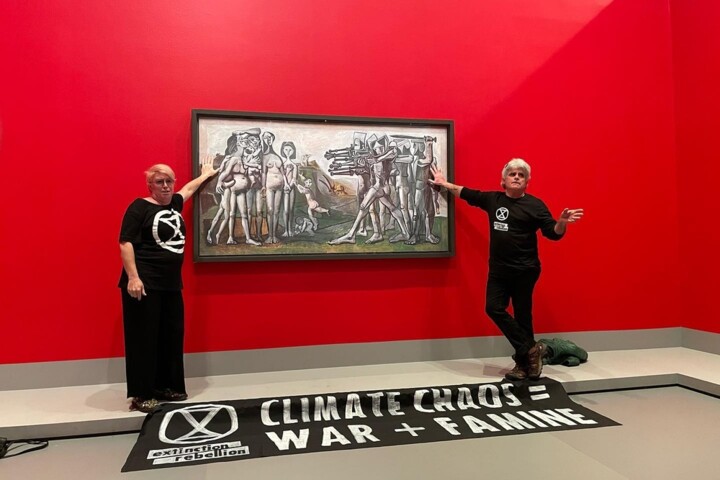 Picasso's turn to get bogged down by members of the Extinction Rebellion
Picasso's turn to get bogged down by members of the Extinction Rebellion
 After the stolen Picasso scandal, the owners of a Parisian gallery were given jail time
After the stolen Picasso scandal, the owners of a Parisian gallery were given jail time
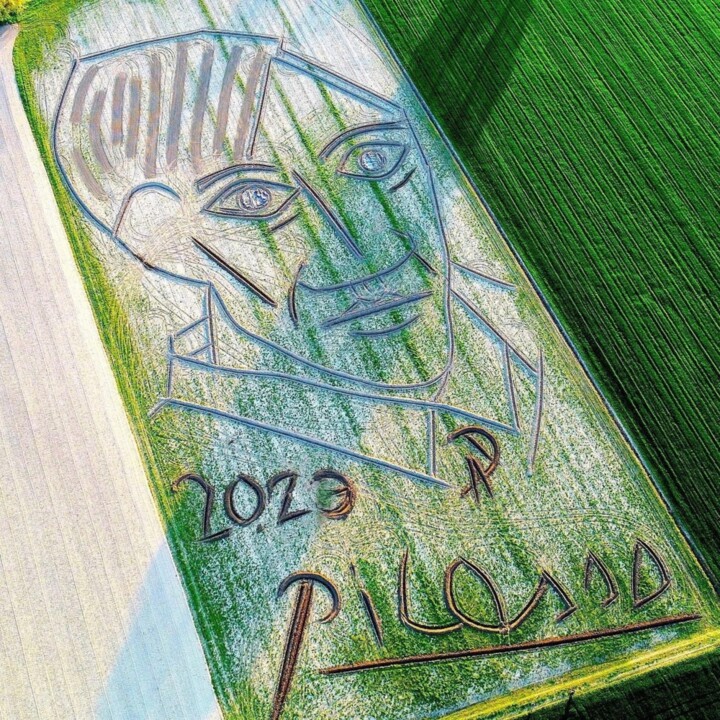 The largest portrait of Picasso in the world by Dario Gambarin
The largest portrait of Picasso in the world by Dario Gambarin
 Leonardo DiCaprio, it is thanks to Leonardo da Vinci
Leonardo DiCaprio, it is thanks to Leonardo da Vinci
 Madonna: art lover and a supporter of contemporary art
Madonna: art lover and a supporter of contemporary art
 Jack Nicholson: a $150 Million Art Collection
Jack Nicholson: a $150 Million Art Collection
 Steve Martin: obsessive collector
Steve Martin: obsessive collector
 At the Reina Sofía Museum in Madrid, visitors can finally capture photographs of Picasso's iconic masterpiece, Guernica, after a three-decade-long prohibition
At the Reina Sofía Museum in Madrid, visitors can finally capture photographs of Picasso's iconic masterpiece, Guernica, after a three-decade-long prohibition
 Bernard Arnault: A Connoisseur's Passion for Art and Luxury
Bernard Arnault: A Connoisseur's Passion for Art and Luxury
 Steve Cohen: The Hedge Fund Titan and Art Collector
Steve Cohen: The Hedge Fund Titan and Art Collector
 The largest private art collection in the world
The largest private art collection in the world
 Philip Niarchos and His $2.2 Billion Art Collection
Philip Niarchos and His $2.2 Billion Art Collection
 Paul Allen: From Microsoft Corporation to art
Paul Allen: From Microsoft Corporation to art
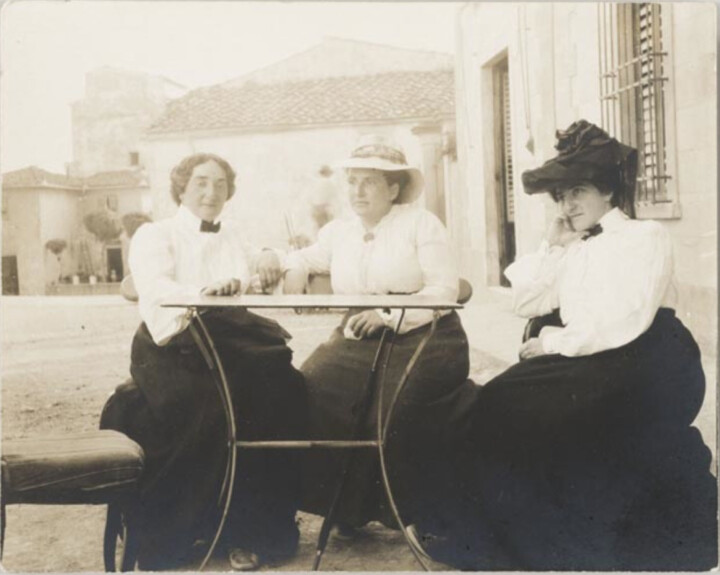 Visionaries of Modern Art: The Remarkable Legacy of the Cone Sisters
Visionaries of Modern Art: The Remarkable Legacy of the Cone Sisters
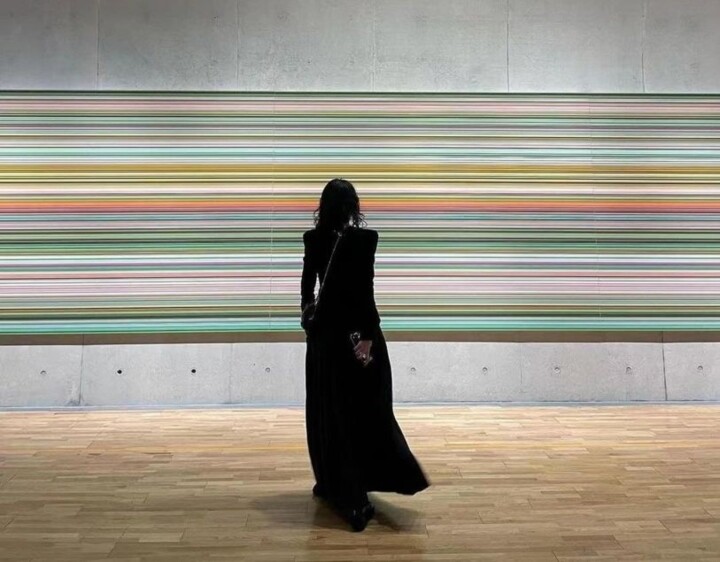 Exploring the Artistic Legacy of Liu Yiqian and Wang Wei
Exploring the Artistic Legacy of Liu Yiqian and Wang Wei
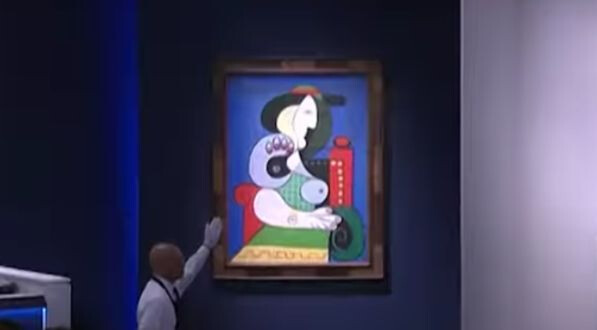 Picasso's 'Woman with a Watch' Auctions for $139M Record
Picasso's 'Woman with a Watch' Auctions for $139M Record
 Solita Cohen: Art is a family passion
Solita Cohen: Art is a family passion
 Wang Zhongjun: The van Gogh mystery
Wang Zhongjun: The van Gogh mystery
 Pablo Picasso: The Man Who Redefined Modern Art
Pablo Picasso: The Man Who Redefined Modern Art







